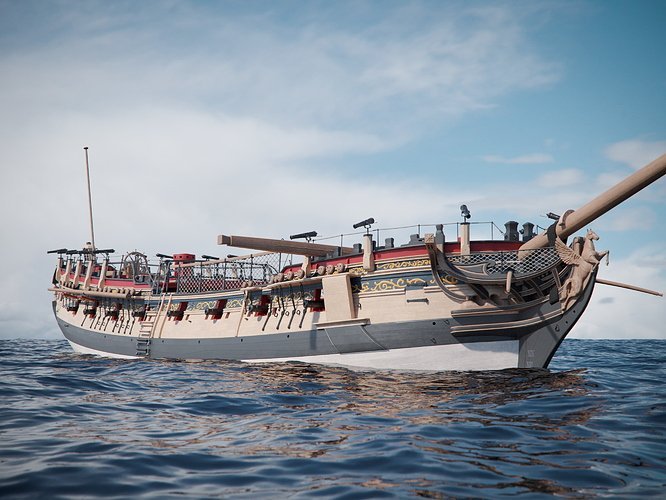-
Posts
3,580 -
Joined
-
Last visited
Content Type
Profiles
Forums
Gallery
Events
Everything posted by yvesvidal
-
Beautiful Model Bruce. Absolutely outstanding. Happy New Year and many more models. Yves
- 126 replies
-
- Finished
- confederacy
-
(and 1 more)
Tagged with:
-
Brian, What a fantastic model. I love the attention to details and the creativity with materials and parts. Your bench is looking great with all these organizing boxes. Yves
-
I love the sand and plants. Very nice touch. Yves
- 101 replies
-
- emma c berry
- model shipways
-
(and 1 more)
Tagged with:
-
Excellent Summary of this great kit. I agree completely with your review of the kit and share your enthusiasm about it, even if I did not complete my ECB yet. Yves
- 161 replies
-
- Model Shipways
- Emma C Berry
-
(and 1 more)
Tagged with:
-
Beautiful work Derek. Happy and Merry Christmas to you as well. Yves
- 345 replies
-
- Duchess Of Kingston
- Vanguard Models
-
(and 1 more)
Tagged with:
-
Tamiya acrylic paints have to be diluted with their thinner. I use 50% paint, 50% thinner in the summer time. In the winter, you may want to go more 70% paint and 30% thinner. Otherwise, it will run way too much. But you probably know all the above, already. Yves
-
What a beautiful l ship... and that bow is amazing of perfection. Yves
- 345 replies
-
- Duchess Of Kingston
- Vanguard Models
-
(and 1 more)
Tagged with:
-
The acrylic resin has been brushed on the inside of the port side: This seals the wood from external agents (humidity mostly) and increases the bonding strength of the wood glue. The resin is permeating the wood fibers and contributing to their resiliency against aging, hygroscopic and temperature changes. It is suggested by CAF and has been used with success by many modelers before. Yves
-
One side done: Now, I have to brush the resin on the inside and do some sanding to make it silky smooth: Yves
-
Thank you Mike. Yes, coppering and a second planking in visible parts, are in order. After all, I am also entitled to a second planking.... 🙂 like so many other kits. Yves
-
The third quadrant has been completed: I know that a lot of experts will see my construction as blasphemy and heresy to what should be done. It is okay and I understand their point of view. I did the best I could, knowing that this hull will be copper tiled and that most of the planking will be hidden. The most important for me was to embrace the shapes and curves of the hull and to make progress in a relatively decent amount of time. The original planks are 8 mm x 3 mm of poplar/limewood strips. To accommodate the sharp curve of the bow in two dimensions/directions, I decided to slice each plank into two 4 mm x 3 mm strakes. It is a lot easier to handle and I built the planking from the whales up to the mid hull, like a stair with enough steps overlap. Once sanded, the hull is very round and still offers a decent level of sturdiness and solidity. A tiny amount of wood paste is necessary in some places to fill up some of the steps, so created. From the keel down, the planking is placed directly against the bulkeads, until the strakes meet as pictured below: The overall results is rather nice (at least in my humble opinion) and replicates quite accurately the external curves of the ship. It is a lot of work as close to 40 small strakes had to be glued one after the other to create the bow: This is where I stand at this moment: I think I will be finishing the port side of the hull, before moving to the other side: Yves
About us
Modelshipworld - Advancing Ship Modeling through Research
SSL Secured
Your security is important for us so this Website is SSL-Secured
NRG Mailing Address
Nautical Research Guild
237 South Lincoln Street
Westmont IL, 60559-1917
Model Ship World ® and the MSW logo are Registered Trademarks, and belong to the Nautical Research Guild (United States Patent and Trademark Office: No. 6,929,264 & No. 6,929,274, registered Dec. 20, 2022)
Helpful Links
About the NRG
If you enjoy building ship models that are historically accurate as well as beautiful, then The Nautical Research Guild (NRG) is just right for you.
The Guild is a non-profit educational organization whose mission is to “Advance Ship Modeling Through Research”. We provide support to our members in their efforts to raise the quality of their model ships.
The Nautical Research Guild has published our world-renowned quarterly magazine, The Nautical Research Journal, since 1955. The pages of the Journal are full of articles by accomplished ship modelers who show you how they create those exquisite details on their models, and by maritime historians who show you the correct details to build. The Journal is available in both print and digital editions. Go to the NRG web site (www.thenrg.org) to download a complimentary digital copy of the Journal. The NRG also publishes plan sets, books and compilations of back issues of the Journal and the former Ships in Scale and Model Ship Builder magazines.







